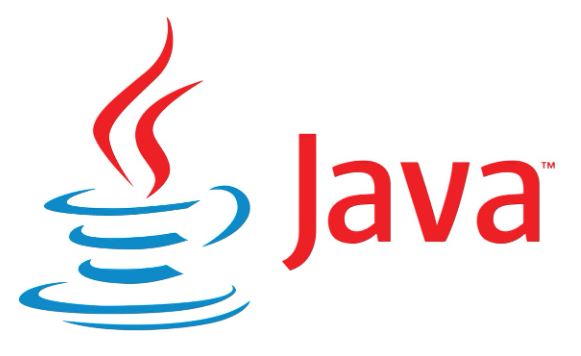Java 系统设计:如何应对高并发场景?
Java 系统设计:如何应对高并发场景?
在现代互联网应用中,高并发场景已经成为系统设计中不可避免的挑战。无论是电商秒杀、抢票系统,还是实时数据处理平台,高并发场景都对系统的性能、稳定性和扩展性提出了极高的要求。本文将深入探讨如何通过 Java 系统设计应对高并发场景,并提供代码示例来说明关键技术和优化策略。
高并发场景下的核心挑战
在高并发场景下,系统通常面临以下核心挑战:
- 性能瓶颈:系统无法在短时间内处理大量请求,导致响应延迟或服务不可用。
- 线程安全:多线程环境下,共享资源的访问可能导致数据不一致或竞态条件。
- 资源竞争:高并发访问会导致数据库连接池耗尽、缓存击穿等问题。
- 数据一致性:分布式系统中,如何保证数据在多个节点间的一致性。
为了应对这些挑战,我们需要从架构设计、并发编程、数据库优化和缓存策略等多个方面入手。
线程池优化:合理配置线程池参数
线程池是 Java 中处理并发请求的核心组件之一。在高并发场景下,线程池的配置直接影响系统的性能和稳定性。以下是一个线程池优化的示例:
import java.util.concurrent.*;
public class ThreadPoolExample {
public static void main(String[] args) {
// 合理配置线程池参数
int corePoolSize = Runtime.getRuntime().availableProcessors() * 2;
int maximumPoolSize = corePoolSize * 2;
long keepAliveTime = 60L;
TimeUnit unit = TimeUnit.SECONDS;
BlockingQueue<Runnable> workQueue = new LinkedBlockingQueue<>(1000);
ThreadFactory threadFactory = Executors.defaultThreadFactory();
RejectedExecutionHandler handler = new ThreadPoolExecutor.CallerRunsPolicy();
ThreadPoolExecutor threadPool = new ThreadPoolExecutor(
corePoolSize,
maximumPoolSize,
keepAliveTime,
unit,
workQueue,
threadFactory,
handler
);
// 模拟高并发任务
for (int i = 0; i < 10000; i++) {
int taskId = i;
threadPool.execute(() -> {
System.out.println("Task " + taskId + " is running on thread " + Thread.currentThread().getName());
try {
Thread.sleep(100);
} catch (InterruptedException e) {
e.printStackTrace();
}
System.out.println("Task " + taskId + " completed");
});
}
threadPool.shutdown();
}
}
关键点分析:
- 核心线程数和最大线程数:根据 CPU 核心数动态计算,避免资源浪费。
- 队列大小:限制任务队列大小,防止内存溢出。
- 拒绝策略:使用
CallerRunsPolicy,让调用线程处理任务,避免任务丢失。
锁优化:乐观锁与分布式锁
在高并发场景下,传统的悲观锁(如 synchronized)会导致大量线程阻塞,影响性能。可以使用乐观锁(如 AtomicInteger)或分布式锁(如 Redisson)来优化。
乐观锁示例
import java.util.concurrent.atomic.AtomicInteger;
public class OptimisticLockExample {
private AtomicInteger count = new AtomicInteger(0);
public void increment() {
// 使用 compareAndSet 实现乐观锁
int current;
int next;
do {
current = count.get();
next = current + 1;
} while (!count.compareAndSet(current, next));
}
public static void main(String[] args) throws InterruptedException {
OptimisticLockExample example = new OptimisticLockExample();
// 模拟高并发场景
Runnable task = () -> {
for (int i = 0; i < 1000; i++) {
example.increment();
}
};
Thread[] threads = new Thread[100];
for (int i = 0; i < threads.length; i++) {
threads[i] = new Thread(task);
}
for (Thread thread : threads) {
thread.start();
}
for (Thread thread : threads) {
thread.join();
}
System.out.println("Final count: " + example.count.get()); // 应该是 1000 * 100 = 100000
}
}
分布式锁示例(使用 Redisson)
import org.redisson.Redisson;
import org.redisson.api.RLock;
import org.redisson.api.RedissonClient;
import org.redisson.config.Config;
public class DistributedLockExample {
private static final String LOCK_KEY = "my_lock";
private static final int LOCK_WAIT_TIME = 10000; // 等待锁的时间(毫秒)
private static final int LOCK_LEASE_TIME = 30000; // 锁的持有时间(毫秒)
public static void main(String[] args) {
// 配置 Redisson 客户端
Config config = new Config();
config.useSingleServer().setAddress("redis://127.0.0.1:6379");
RedissonClient redisson = Redisson.create(config);
RLock lock = redisson.getLock(LOCK_KEY);
// 模拟高并发任务
Runnable task = () -> {
try {
// 尝试获取锁
boolean isLocked = lock.tryLock(LOCK_WAIT_TIME, LOCK_LEASE_TIME, TimeUnit.MILLISECONDS);
if (isLocked) {
System.out.println("Thread " + Thread.currentThread().getName() + " acquired the lock");
// 执行业务逻辑
Thread.sleep(1000);
} else {
System.out.println("Thread " + Thread.currentThread().getName() + " failed to acquire the lock");
}
} catch (InterruptedException e) {
e.printStackTrace();
} finally {
// 释放锁
if (lock.isHeldByCurrentThread()) {
lock.unlock();
System.out.println("Thread " + Thread.currentThread().getName() + " released the lock");
}
}
};
// 启动多个线程模拟高并发
for (int i = 0; i < 10; i++) {
new Thread(task).start();
}
}
}
关键点分析:
- 乐观锁:通过
AtomicInteger的compareAndSet方法实现无锁并发,避免线程阻塞。 - 分布式锁:使用 Redisson 实现分布式锁,确保在分布式环境下数据一致性。
缓存策略:解决缓存穿透与缓存雪崩
缓存是高并发场景下的重要优化手段,但缓存穿透(查询不存在的数据)和缓存雪崩(大量缓存同时过期)是常见的问题。以下是解决这些问题的策略和代码示例。
缓存穿透解决方案
import java.util.concurrent.TimeUnit;
public class CachePenetrationExample {
private final Cache<String, String> cache = new Cache<>();
public String getData(String key) {
// 先从缓存中获取数据
String value = cache.get(key);
if (value != null) {
return value;
}
// 如果缓存中没有数据,查询数据库
String dbValue = queryDatabase(key);
// 如果数据库中也没有数据,将空值存入缓存(设置较短的过期时间)
if (dbValue == null) {
cache.put(key, "", 60, TimeUnit.SECONDS); // 缓存空值,过期时间 60 秒
return null;
}
// 将数据库查询结果存入缓存
cache.put(key, dbValue, 300, TimeUnit.SECONDS);
return dbValue;
}
private String queryDatabase(String key) {
// 模拟数据库查询
System.out.println("Querying database for key: " + key);
// 假设数据库中没有数据
return null;
}
public static void main(String[] args) {
CachePenetrationExample example = new CachePenetrationExample();
// 模拟缓存穿透场景
for (int i = 0; i < 100; i++) {
new Thread(() -> {
example.getData("nonexistent_key");
}).start();
}
}
}
缓存雪崩解决方案
import java.util.concurrent.ConcurrentHashMap;
import java.util.concurrent.TimeUnit;
import java.util.concurrent.atomic.AtomicInteger;
public class CacheSnowstormExample {
private final ConcurrentHashMap<String, String> cache = new ConcurrentHashMap<>();
private final AtomicInteger cacheVersion = new AtomicInteger(0);
public String getData(String key) {
// 先从缓存中获取数据
String value = cache.get(key);
if (value != null) {
return value;
}
// 如果缓存中没有数据,查询数据库
String dbValue = queryDatabase(key);
// 将数据库查询结果存入缓存,设置随机过期时间
int randomExpireTime = 300 + (int) (Math.random() * 100); // 随机过期时间 300-400 秒
cache.put(key, dbValue);
// 使用版本号避免缓存雪崩
cacheVersion.incrementAndGet();
return dbValue;
}
private String queryDatabase(String key) {
// 模拟数据库查询
System.out.println("Querying database for key: " + key);
return "value_" + key;
}
public static void main(String[] args) {
CacheSnowstormExample example = new CacheSnowstormExample();
// 模拟缓存雪崩场景
for (int i = 0; i < 100; i++) {
new Thread(() -> {
example.getData("key_" + (int) (Math.random() * 10));
}).start();
}
}
}
关键点分析:
- 缓存穿透:通过缓存空值解决,设置较短的过期时间。
- 缓存雪崩:通过随机过期时间和版本号机制避免大量缓存同时过期。
数据库优化:连接池与分库分表
在高并发场景下,数据库通常是性能瓶颈之一。通过使用连接池和分库分表策略,可以显著提升数据库的处理能力。
数据库连接池优化
import com.zaxxer.hikari.HikariConfig;
import com.zaxxer.hikari.HikariDataSource;
import javax.sql.DataSource;
import java.sql.Connection;
import java.sql.SQLException;
public class DataSourceExample {
public static void main(String[] args) {
HikariConfig config = new HikariConfig();
config.setJdbcUrl("jdbc:mysql://localhost:3306/test");
config.setUsername("root");
config.setPassword("password");
config.setMaximumPoolSize(50); // 最大连接数
config.setMinimumIdle(10); // 最小空闲连接数
config.setIdleTimeout(30000); // 空闲超时时间(毫秒)
config.setMaxLifetime(1800000); // 连接最大生命周期(毫秒)
config.setConnectionTimeout(30000); // 获取连接超时时间(毫秒)
HikariDataSource dataSource = new HikariDataSource(config);
// 模拟高并发数据库操作
for (int i = 0; i < 100; i++) {
new Thread(() -> {
try (Connection connection = dataSource.getConnection()) {
System.out.println("Thread " + Thread.currentThread().getName() + " acquired connection");
// 执行数据库操作
Thread.sleep(100);
} catch (SQLException | InterruptedException e) {
e.printStackTrace();
}
}).start();
}
}
}
分库分表策略
import java.util.HashMap;
import java.util.Map;
public class ShardingExample {
private final Map<Integer, DataSource> dataSources = new HashMap<>();
public ShardingExample() {
// 初始化多个数据源
for (int i = 0; i < 10; i++) {
HikariConfig config = new HikariConfig();
config.setJdbcUrl("jdbc:mysql://localhost:3306/shard" + i);
config.setUsername("root");
config.setPassword("password");
dataSources.put(i, new HikariDataSource(config));
}
}
public DataSource getDataSource(int shardKey) {
// 根据 shardKey 计算分片
int shardId = shardKey % dataSources.size();
return dataSources.get(shardId);
}
public static void main(String[] args) {
ShardingExample example = new ShardingExample();
// 模拟分库分表操作
for (int i = 0; i < 100; i++) {
new Thread(() -> {
int shardKey = (int) (Math.random() * 1000);
DataSource dataSource = example.getDataSource(shardKey);
try (Connection connection = dataSource.getConnection()) {
System.out.println("Thread " + Thread.currentThread().getName() + " acquired connection from shard " + (shardKey % 10));
// 执行数据库操作
Thread.sleep(100);
} catch (SQLException | InterruptedException e) {
e.printStackTrace();
}
}).start();
}
}
}
关键点分析:
- 连接池优化:通过合理配置连接池参数,避免数据库连接耗尽。
- 分库分表:通过哈希算法将数据分散到多个数据库,提升处理能力。
总结
在高并发场景下,Java 系统设计需要从多个层面进行优化:
- 线程池:合理配置线程池参数,避免资源耗尽。
- 锁优化:使用乐观锁和分布式锁解决资源竞争问题。
- 缓存策略:通过缓存穿透和缓存雪崩的解决方案提升性能。
- 数据库优化:使用连接池和分库分表策略提升数据库处理能力。
通过本文提供的代码示例和优化策略,开发者可以在实际项目中有效应对高并发场景,提升系统的性能和稳定性。希望这些内容对您有所帮助!

